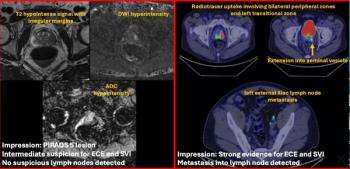FDA Expands Approval of Cardiac Ultrasound Imaging Agent for Pediatric Patients
The only ultrasound enhancing agent that does not contain polyethylene glycol, Optison may now be utilized to enhance echocardiogram assessment of ventricular function in pediatric patients.
The Food and Drug Administration (FDA) has approved an expanded indication that allows use of ultrasound enhancing agent Optison for pediatric patients with suboptimal echocardiograms.
Through the use of gas-filled microbubbles,
Originally approved by the FDA in 1997 for adult patients, Optison was the subject of a recent phase IV multicenter study. GE HealthCare said the study results revealed the effectiveness of the ultrasound enhancing agent in improving delineation of endocardial borders as well as imaging of ventricular wall segments in pediatric patients.
“Ultrasound enhancing agents have significantly advanced diagnostic quality in adult echocardiography over the years, and we are now seeing promising research supporting their safe and effective use in pediatric patients,” said Arash Sabati, MD, FACC, a pediatric cardiologist and non-invasive imaging specialist at Phoenix Children’s. “The availability of agents like Optison will further enhance diagnostic imaging for pediatric patients, helping to ensure the best possible care.”
Newsletter
Stay at the forefront of radiology with the Diagnostic Imaging newsletter, delivering the latest news, clinical insights, and imaging advancements for today’s radiologists.





























